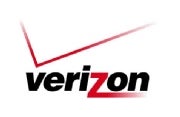The carrier now says it will reach 39 markets and 60 airports in the US with its fast LTE 4G coverage.
By Mark Sullivan, Oct 7, 2010 1:39 amVerizon announced on Wednesday that it will launch 4G service in more cities than previously announced. The move falls in line with increasing competition among wireless providers to roll out faster service, and the quickly growing demand for fast data service among consumers. Verizon said it will launch the service in 39 US markets, including New York City, Chicago, Dallas, Atlanta, Los Angeles, and San Francisco. The LTE launch now includes 14 more cities than the 25 the company previously said it would launch with during 2010.
And the rollout into these markets will not be gradual, but aggressive. At launch, Verizon says, more than 75 percent of the populations of its LTE cities will have access to the service. See Verizon's press release for a list of new LTE markets and more details.
 The LTE network will pump out download speeds of 5-12 megabits per second (mbps), and upload speeds of 2-5 mbps.
The LTE network will pump out download speeds of 5-12 megabits per second (mbps), and upload speeds of 2-5 mbps.The LTE (Long-Term Evolution) 4G coverage, Verizon says, will be available to more than 110 million Americans by the end of this year. Verizon projects that the service will cover 200 million people by end of 2011, and will be as far reaching as its 3G network by the end of 2013.
Verizon’s rollout will rob Sprint of its early lead in the 4G arms race. Sprint has already launched its own WiMAX flavor of 4G in 50+ US cities through its partnership with Clearwire. The balance of power now shifts in Verizon’s--and LTE’s--favor. AT&T says it will begin lighting its own 4G LTE network in 2011.
The first Verizon devices to connect with the faster LTE network will be USB modems for laptops, the company says. Verizon Wireless COO Lowell McAdam says Verizon will show off new LTE smartphones and tablets at the 2011 CES conference in January, and that those new products will go on sale in the first half of next year.
Verizon says its upcoming devices will contain both 3G and 4G radios. Voice service will run over the existing 3G network, while Internet access, or data service, will run over the new LTE network.
The carrier is inviting rural and regional carriers to develop their own LTE networks, as well as offering LTE roaming agreements with rural carriers that build LTE networks.
Even with the new network capacity that will come with LTE, the days of all you can eat mobile data plans are coming to an end, McAdam says. “We think there’s a place for unlimited plans, but over time, even if we have a big pipe, our customers are going to need to shift to a model where you pay for what you use. Over time we will clearly be migrating to a tiered pricing model.”

